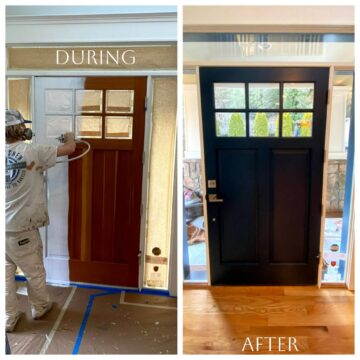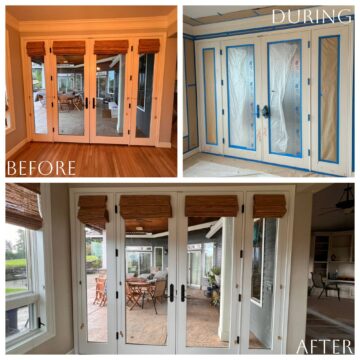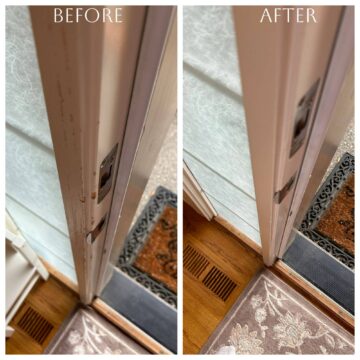When you’re hiring a painter, one important question to ask is, “How will you paint my interior trim? Will you spray or hand paint?” Both methods have their pros and cons, so it’s worth understanding the differences before making a decision.
When to Spray
In the hands of a professional interior painter, spraying is known for creating a smooth, flawless finish. The result is a trim that’s free of brush marks and roller stipple. The paint will be smooth to the touch, with a consistent sheen. If you opt for a higher sheen like semi-gloss or high gloss, the finish can appear almost glass-like, especially when viewed at an angle with light reflecting off it.
Another advantage of spraying is speed. The actual painting time is much quicker than hand painting. If you want a finish that has zero brush marks, spraying is the way to go.
When to Hand Paint
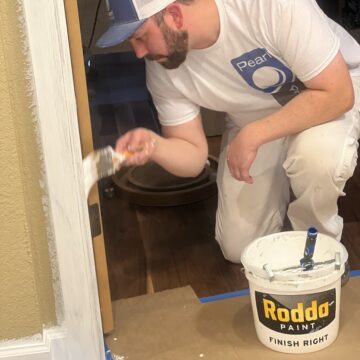
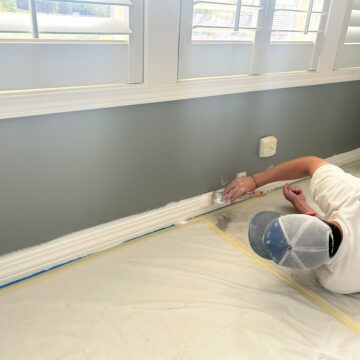
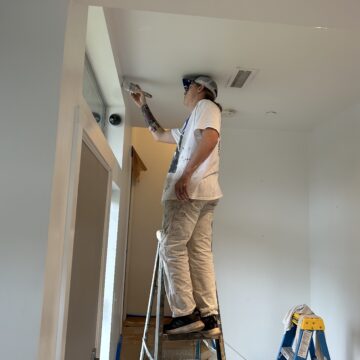
But what about hand painting? Can it deliver the same smooth finish? Yes, it can – if your painter has the right skills and experience. With the right process, a hand-painted finish can be nearly as smooth as a sprayed one.
However, if the painter doesn’t know what they’re doing, even spraying won’t guarantee a smooth finish. The success of either method relies heavily on the painter’s expertise.
Cautionary Spraying Tales
So, why wouldn’t everyone just spray? The biggest reason is the logistics of spraying in an occupied home. Spraying requires more prep work, including moving all furniture out of the room – not just covering it with plastic. While we paint, we are dragging a pressurized spray hose around the room, which will inevitably disturb any protective coverings. This is why spraying in a room full of furniture is a recipe for disaster. When you are asking painters where your furniture will be when they are spraying your trim, be concerned if they say “in the middle of the room under plastic.”
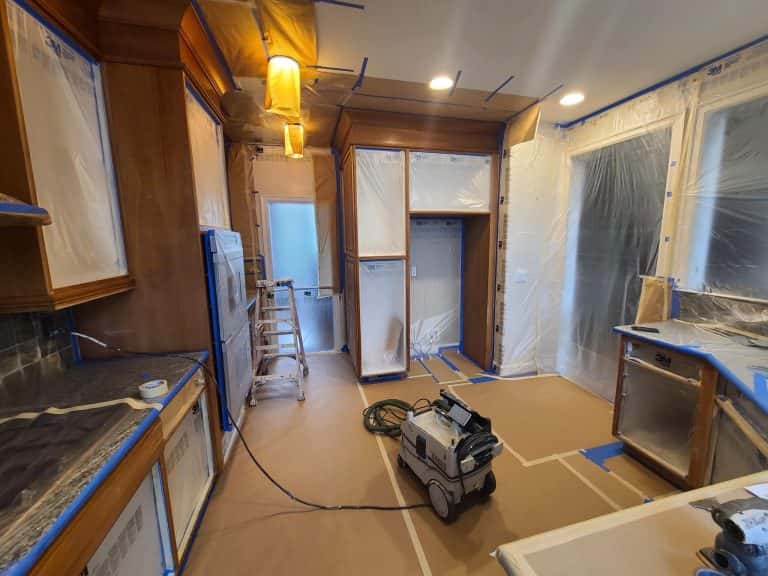
Spraying can also be inconvenient for homeowners who don’t have time to plan ahead beforehand. Carefully prepping rooms for spraying includes sealing off closets that you might still have clothes and other items in. The masking has to stay in place securely throughout the entire process.
Unfortunately, we have had clients make the mistake of going into a masked area of their home to retrieve something from a sealed closet, and then attempt to put the masking back themselves without informing us. Well, guess what happens when 2000 psi of paint spray hits the tape that we thought had been properly placed! Yeah, exactly.
Ideally, if you hire professional painters who will be spraying your interior trim, plan ahead and get everything you might need out of the room before they start. But, if you forget something, always tell your painter if you need to access belongings behind the sealed area. We are always happy to help!
We use lessons like the ones above in addition to many, many, many more to refine our BKM’s until they don’t fail!
Fumes from Spraying
Another downside to spraying is the fumes. Most paints and primers are harmful to breathe, and spraying magnifies this issue. While hand painting allows you to be in the room while the paint is applied, spraying with the room sealed off means that our team is working in full respirators for their protection.
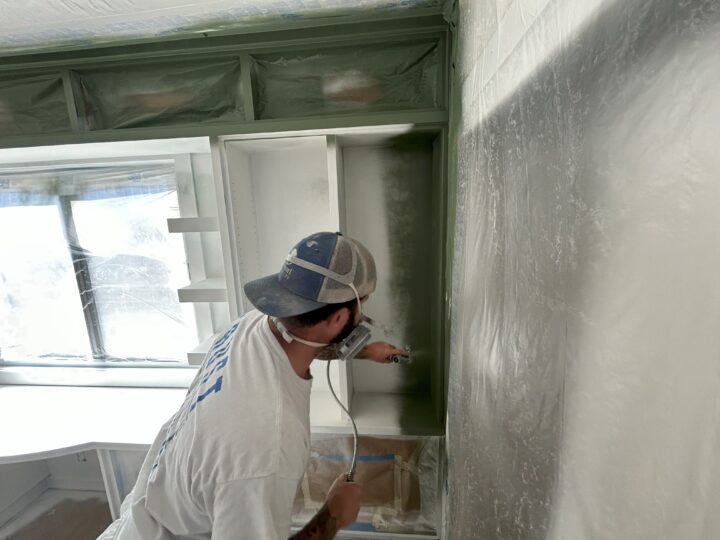
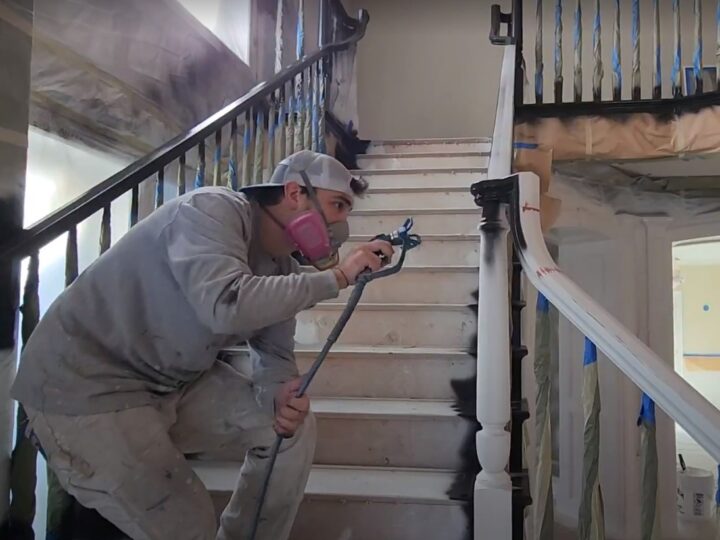
Maintenance and Touch-Ups
Maintenance is another factor to consider. All paint will eventually need touch-ups, whether it’s sprayed or hand-painted. But which is easier to touch up? The answer is hand painting.
Why is hand painting easier to touch up? Sprayed paint often looks shinier because of the slightly smoother and more uniform surface that is created. On the other hand, the same paint applied by hand will have a slight texture, which diffuses light and makes the paint appear less shiny. This means that touching up a sprayed finish with a brush can be noticeable. To perfectly touch up a sprayed area, you’d need to isolate the section and re-spray it, which involves a ton of extra work. On the other hand, touching up a hand-painted finish is usually a straightforward process, and something you could even do yourself.
Cost Considerations
In most cases, the cost for spraying versus hand painting is about the same. Spraying is faster, but the time saved is balanced by the extra prep work required. And remember, living in your home during a spraying project isn’t easy unless it’s just a couple of isolated rooms.
Combining Spray and Hand Painting
One option that many clients appreciate is a combination of both methods. For high-profile areas that will be closely scrutinized, like kitchen cabinets or dining room wainscoting, spraying might be the best choice. These areas can be isolated, allowing you to stay comfortable in your home while we work. For less visible areas, hand painting can be just as effective. To the untrained eye, it’s difficult to even see the difference between spraying and hand painting when done by a professional painter.
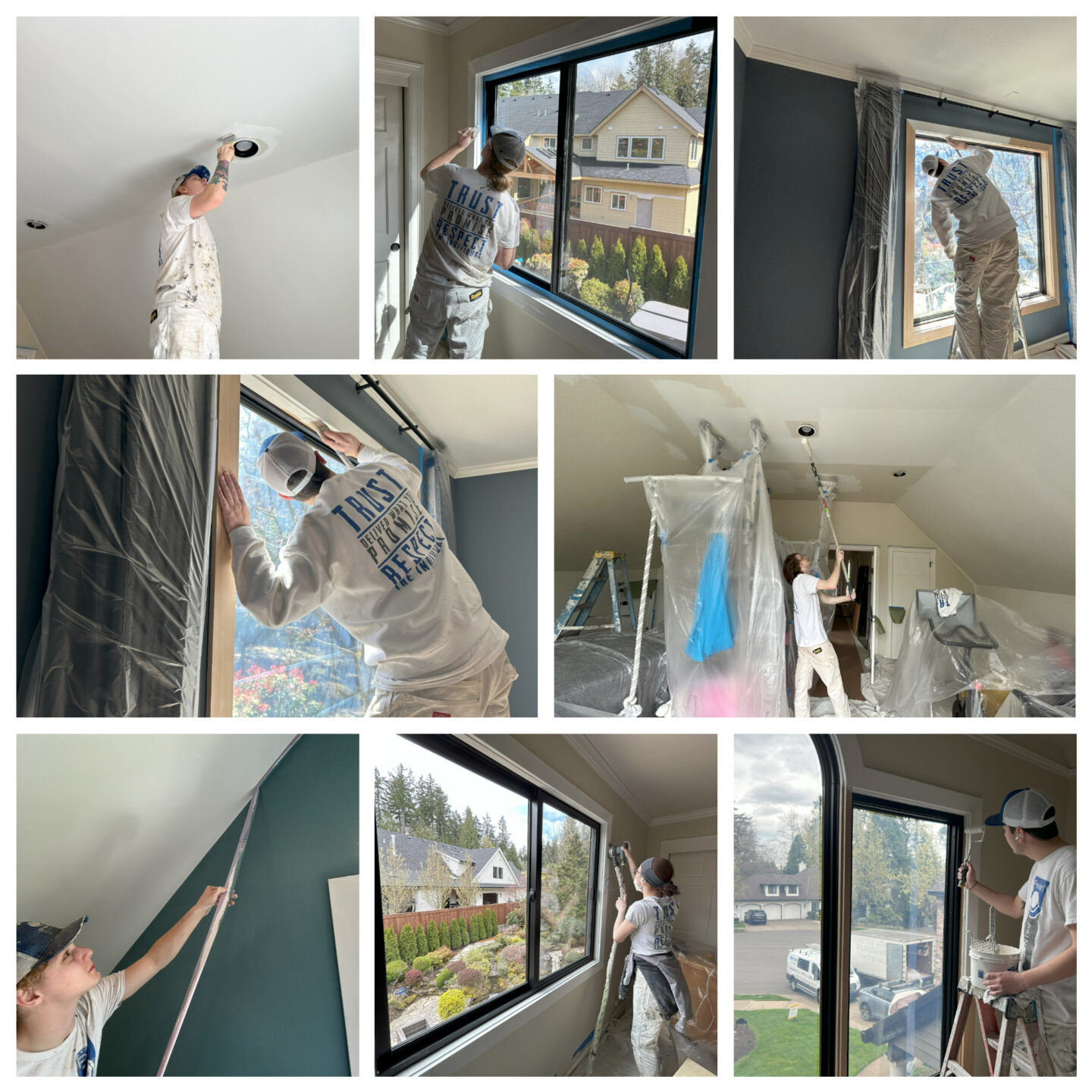
So, which is better for your home—spraying or hand painting? The answer depends on your needs. If you’re after a flawless finish and can handle the extra prep work, spraying might be the way to go. But if you need flexibility, hand painting is an excellent option. And for the best of both worlds, combining the two methods could be your perfect solution.


